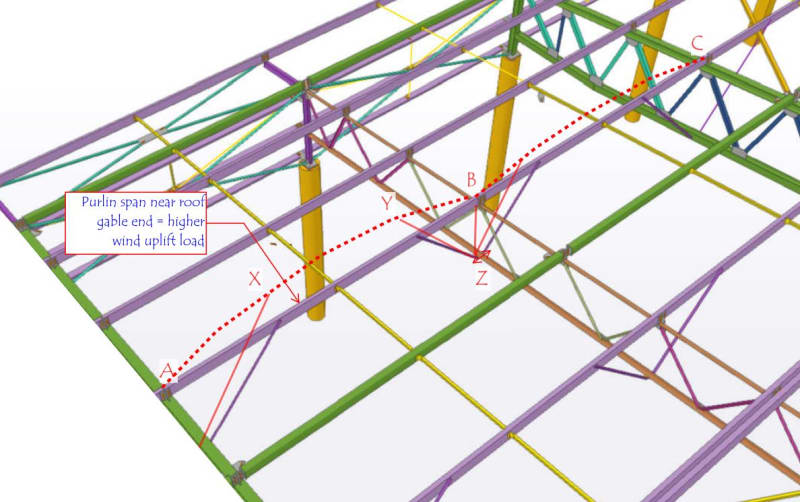Hello,
I participate in a Whatsapp group with some engineers of my region(Brazil) and one of them said that he uses fly brace to reduce the span of the purlin. He introduces the fly brace on the software and the purlin acts as a continuous purlin.
I said that consider this wrong because the bottom chord of the truss is not adequate to receive the horizontal load and that he may introduce torsion on the truss, but he doesn't believe it because the analysis show no problem when he introduces the fly brace and the purlin, who otherwise fails, pass.
I think that the loads are balanced and the horizontal loads are absorbed by the opposite fly brace and suggested, without success, that he analyses the model with live load on only one span.
What do you guys think of this?
I've seen that a lot of the engineers on the group agree with him and do the same.
I participate in a Whatsapp group with some engineers of my region(Brazil) and one of them said that he uses fly brace to reduce the span of the purlin. He introduces the fly brace on the software and the purlin acts as a continuous purlin.
I said that consider this wrong because the bottom chord of the truss is not adequate to receive the horizontal load and that he may introduce torsion on the truss, but he doesn't believe it because the analysis show no problem when he introduces the fly brace and the purlin, who otherwise fails, pass.
I think that the loads are balanced and the horizontal loads are absorbed by the opposite fly brace and suggested, without success, that he analyses the model with live load on only one span.
What do you guys think of this?
I've seen that a lot of the engineers on the group agree with him and do the same.

![[cook] [cook] [cook]](/data/assets/smilies/cook.gif)
